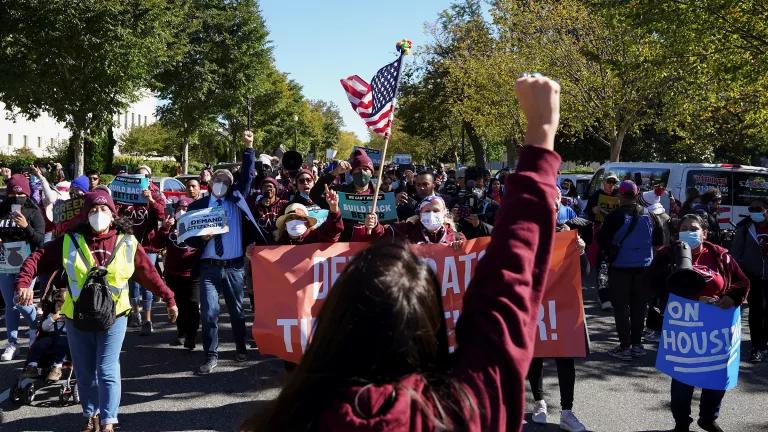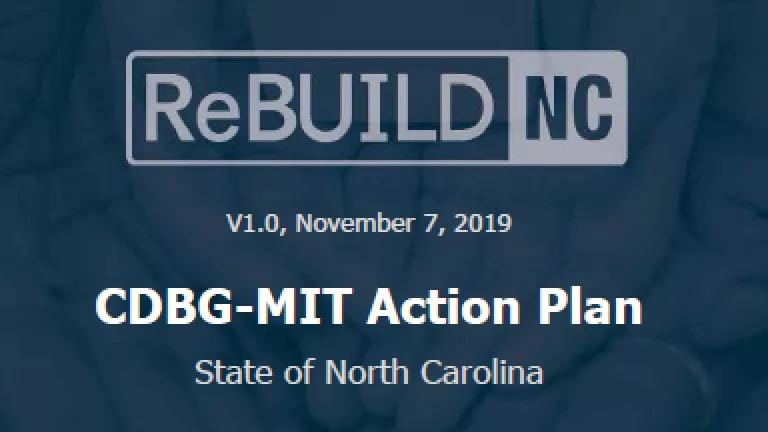Midwest Floods: The World at One Degree of Warming

Communities throughout the Midwest and the Lower Mississippi River Basin have been living with one of the longest periods of flooding ever recorded in the United States. Major flooding began in March in Nebraska, Missouri, and Iowa; waters then began rising along the Upper Mississippi later that month and through April; and in Louisiana areas have been over flood stage for most of the year.
The Midwest Flood of 2019 is the latest reminder of climate’s impacts with just 1o C of warming. These floods follow Hurricanes Harvey, Irma, Maria in 2017; Florence and Michael in 2018; record wildfires in 2017 and 2018; and I could recount a very long list of additional climate-driven disasters in every preceding year for many years prior. All are examples of how our world is being impacted with 1o C of warming.
Climate change is already outpacing our nation’s ability to adapt to the consequences, as the growing frequency and magnitude of disasters is making so evident. This “adaptation and resilience gap” will grow dramatically, even under the best-case climate change scenarios (warming of 1.5o C – 2.0o C), a fact that is a bit uncomfortable to acknowledge, but is a fact nonetheless.
The nation must plan for the worst and hope for the best just to keep pace with the adaptation and resilience gap that might exist under more likely, and perhaps even the worst case, climate change scenarios.
The Great Flood of 2019 is a perfect example of what climate scientists have been telling us (for years) to expect in the Midwest as the climate changes. But for many, even those who focus on the implications of climate change, it’s easy to be lulled into thinking that the rising potential for floods (or wildfires, or drought, or severe weather) is a future impact that can be mostly avoided or avoided entirely. There’s a temptation to think, “If we keep emissions down and hold warming to 1.5o C – 2.0o C, we’ll avoid the worst impacts,” which some may interpret to mean that we’ll somehow avoid most of the impacts.
But the impacts of climate change look awfully bad right now from the perspectives of the people and communities who have been struggling for months to save their homes, their businesses, and their farms from flooding across the Midwest. It’s little solace to hear that achieving the most optimistic goals for emissions reductions means “we’ll avoid the worst impacts of climate change,” because if you’ve recently lost your home, business, farm—perhaps even lost a loved one to flood waters, or some other disaster—the worst thing that could happen has already happened.
The first step to solving a problem is to admit you have one. In the arena of climate change, that has sometimes stopped at admitting (and for others, adamantly denying) that we have an emissions problem that is causing climate change. It’s now quite clear that we also have a rather serious climate impacts problem that is here to stay and is going to demand much more of our attention under every potential climate scenario—from the most optimistic, to the more realistic, to the climate scenarios that we have to hope never happen.
Recognizing the problem before us, it’s time to work on the solutions. Obviously, lowering emissions is critically important, and becomes more critical with each passing day. Of equal and growing importance is how we accelerate efforts with regards to climate adaptation and resiliency.
On the Mississippi and Missouri Rivers, we can see the need to think very differently about our management of the river, when viewed through the lens of climate adaptation. Floods have become more frequent, are growing in magnitude, and are lasting longer (this year’s flooding is breaking records in all three categories, particularly the latter). And that’s not going to change. What does need to change is the way we deal with that reality if we’re going to protect communities from flooding like that we’re seeing this year and in the years to come.



